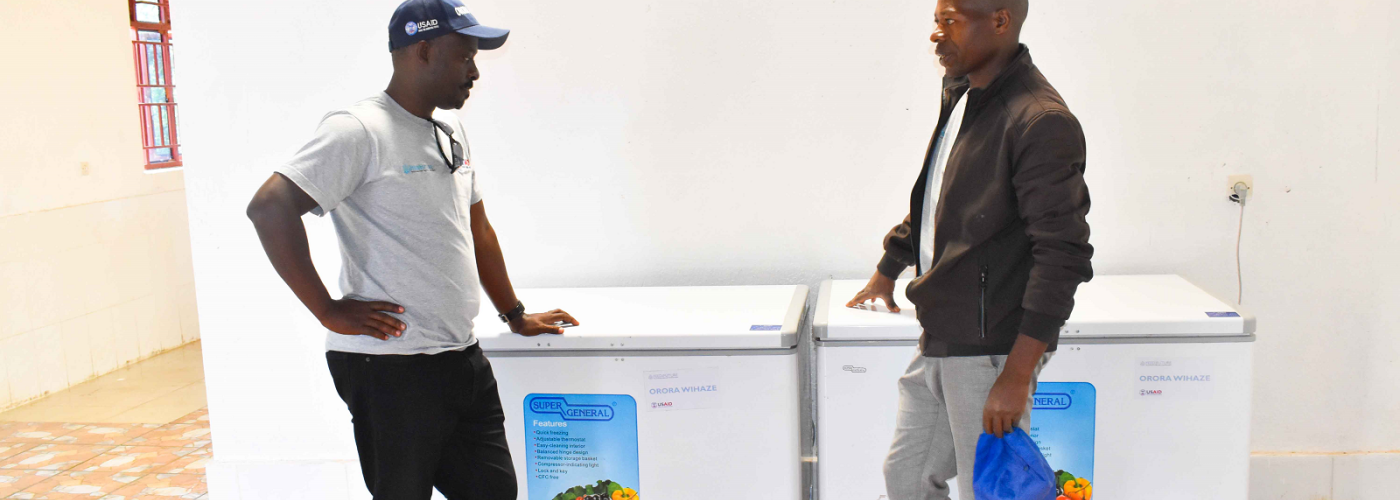Boost the Performance of Your Investments: Listen to Consumers Early and Continually
Image

An important element of effective markets is strong consumer demand that is recognized in the consumer behavior of purchasing and using products. To utilize latent demand and improve demand that produces significant shifts in consumer behavior will require that market activities continuously cater to evolving consumer needs and values. Failure to do so results in missed opportunities to maximize latent demand, activities, and products that fall short of expected goals because of low consumer acceptance. Understanding consumer demand means hearing the voices of those people who could either use more of the product or are currently outside of the product’s customer base. It means going beyond consumers’ reactions tied directly to a product to an understanding of their lives, influences, preferences, and values and how they change. Centering design and implementation around an understanding of consumer preferences — and how to cater to them — provides a new perspective to inform technical and operational decisions; and it heightens the chance of increased sales, consumption, and — ultimately, in the case of foods — a modified dietary pattern among the population.
The Feed the Future Orora Wihaze Activity sought consumer input in Rwanda upfront to avoid the pitfall of poor consumer engagement. The activity’s twin goals of a) developing a profitable market for animal-source foods (ASF) and b) improving the consumption of ASF by families in small towns and rural areas, meant that it was critical to understand the behaviors and perspectives of potential ASF consumers in the project districts.
Orora Wihaze supported a qualitative study of the influences on consumers’ demand for and consumption of ASF across the Activity’s districts of influence. This in-depth study illuminated what families are eating, how they procure ASF, family dynamics around food and ASFs, perceptions of different ASFs, and, importantly, family members’ reactions to being asked about shifts in their practices to include various ASFs in their diet. It also highlighted many reasons why Rwandans are among the lowest consumers of ASF globally — beyond the usual response of “it is not our custom.” These insights guided the activity’s next steps.
The graphic below shows critical factors influencing a caregiver’s ability or choice to procure and serve ASF to their family. The study found that the largest obstacle to ASF consumption is local availability and product affordability. Less prominent — but still significant — are perceptions that ASFs are not for them (lower-income consumers) but instead are for people of better means. The study also uncovered a strong gender bias associated with ASF. That is, ASFs are easily divided between those within the male and female domains. The smaller and least expensive foods — eggs, fish, and, to some extent, chicken — are in the woman’s domain and, therefore, most appropriate for her to engage with raising, purchasing, and consuming. Also, because ASFs are not frequently consumed, caregivers are uncertain about how to prepare them as part of regular family meals. Amidst these obstacles, the study found high latent demand for ASF. Participants generally agreed that ASFs are good, desirable foods, recognized as nutritious, especially for young children, and foods that “make tasty sauces.”
Image

Fig. 1 Depiction of the structural, social, and internal hurdles that must be overcome to realize the basic desirability for ASF
These consumer insights influenced Orora Wihaze’s strategy design by closely tying the supply and demand inputs of the market continuum. The strategy ensures that production and market availability meet demand, especially for mid- and lower-income consumers, so that as demand evolves, it shapes and strengthens ASF supply, product production, and other functions along the value chain. Specifically, Orora Wihaze used these consumer insights to make program decisions related to:
- The value chains to prioritize: poultry, eggs, and fish.
- The need to develop ASF products that remain in small town and rural markets and that are packaged and sold at more affordable prices.
- The content and tone of the social and behavior change communication program. It needed to veer from the usual emphasis on nutrition information to address key social and internal factors influencing behavior: perceptions, skills, and gender norms.
While Orora Wihaze implementation is guided by the early input of potential consumers, program managers realized that consumer input does not stop at the design phase. One focus of the Activity is to support small-scale, rural-based entrepreneurs to develop products for local retail, such as packaged chicken pieces, eggs, small fish and fish powder, egg powder, and pork cuts. Orora Wihaze is supporting these small enterprises to solicit consumer input to inform product development and marketing.
For example, recently, Orora Wihaze worked with JFILEWO Ltd., a chicken producer in Rutsiro district, to conduct market research for their new product, ready-to-cook chicken cuts. With this new product, JFILEWO Ltd. aims to create a profitable chicken business and change consumer perceptions about the cost of chicken by offering chicken cuts in different sized packages favorably priced when compared to the price of a chicken requiring slaughter (the typical way chicken is bought). Before finalizing plans, consumer opinions about the benefits and drawbacks of this new product were sought to inform the final product and its marketing. The research probed consumers’ preference in the contents of the package; important attributes they would look for in this new product; opinions about pricing; and needed quality assurances. Shaping the final offering of JFILEWO are these consumer opinions:
- A preference for packages with mixed chicken parts, although some consumers want packages that contain only parts they like, such as the legs. Consumers also expressed their desire to buy internal organs — the gizzard, liver, and heart. (These parts were not considered for the packages.)
- Strong agreement with the different sized packages at different price points, because these options will mean more people can afford chicken.
- The convenience of not managing the slaughtering of a live chicken (buying ready-to-cook chicken) and being able to eat chicken more frequently are seen overwhelmingly as the benefits.
- A desire to receive suggestions on how to prepare the meat they purchase.
- The premium that consumers place on safety and hygiene: knowing that the chicken and its processing meets Rwanda Inspectorate, Competition and Consumer Protection Authority (RICA) standards. (Orora Wihaze also works with RICA to improve the safety and hygiene of slaughterhouses in the project districts.)
Since inception, Orora Wihaze has been applying private sector marketing lessons, including the importance of consumer inputs, to guide product development and marketing. While critical for Orora Wihaze, the activity is careful that this practice is not viewed by the local entrepreneurs as a “nice-to-have,” but rather a fundamental part of their business plans. By working closely with each enterprise on its market research, Orora Wihaze hopes this best practice will demonstrate its merits, and build demand among businesses for this information moving forward. To this end, Orora Wihaze plans additional market research with JFILEWO following the launch of their product and with other small enterprises. The goal is to continually demonstrate the power of consumer insights to avoid disappointment when products fail to take root, and instead to meet the goals of each enterprise.



